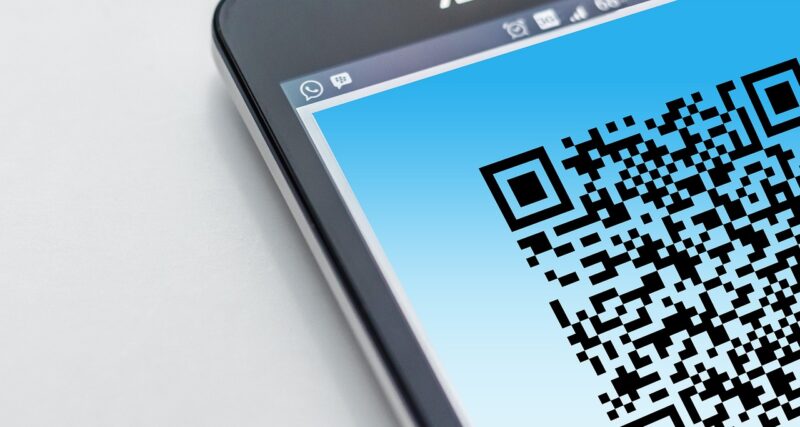
In an increasingly digital world, the intersection of technology and commerce is evolving rapidly. Among the many innovations that have emerged, QR (Quick Response) codes stand out as a particularly powerful tool in modern e-commerce marketing. While QR codes have existed for decades, their utility has surged in recent years, particularly spurred on by the COVID-19 pandemic and the subsequent acceleration of contactless transactions.
The objective of this article is to dive deep into the significant role that QR codes play in e-commerce marketing today and what the future holds for this technology.
1. What Are QR Codes?
QR codes are two-dimensional barcodes that can store URL links, text, contact information, and other data types. Scanning a QR code with a smartphone camera allows consumers to access information quickly without manually typing in web addresses or other data. Introduced in the 1990s for tracking automotive parts in Japan, QR codes have been transformed into a marketing asset for businesses over the years.
With the rise of smartphones, QR codes became a bridge between offline and online marketing efforts, helping businesses connect with consumers quickly and efficiently.
2. The Evolution of QR Codes in Marketing
Initially, QR codes were viewed as a novelty rather than a staple of marketing. However, their adoption has evolved in several key ways:
- Increased Accessibility: Modern smartphones come equipped with cameras capable of scanning QR codes directly. Users can access QR codes without needing to download a separate app, making them more convenient than ever.
- Heightened Awareness: The pandemic highlighted the need for contactless interactions. Restaurants used QR codes to provide menus, payment options, and promotional offers without the need for physical contact, thereby successfully raising consumer awareness regarding QR technology.
- Versatile Applications: QR codes can direct consumers to websites, apps, or social media pages, making them a versatile marketing tool for businesses looking to enhance engagement and conversions.
These factors have collectively contributed to the growing popularity of QR codes as a modern marketing tool.
3. Benefits of Using QR Codes in E-Commerce Marketing
Incorporating QR codes into an e-commerce marketing strategy offers numerous advantages:
- Enhanced User Experience: QR codes simplify access to promotional content, product details, or discount offers. By scanning a QR code, users can bypass tedious searches and navigation, leading to a smoother shopping experience.
- Tracking and Analytics: One of the key perks of QR codes is their trackability. Marketers can analyze scanning data like geographic locations and times to gauge campaign effectiveness and consumer interests, allowing for tailored marketing strategies in the future.
- Cost-Effectiveness: Creating QR codes is inexpensive, and they can be placed on marketing materials of all kinds, such as flyers, posters, and social media ads, providing an economical way to reach large audiences.
- Expanding Customer Engagement: QR codes can link to various digital content, such as video demos, customer reviews, or loyalty programs, clearly engaging your audience on multiple levels. By providing customers with added value, brands can improve retention and conversion rates.
These benefits empower brands to craft effective and interactive marketing campaigns that resonate with tech-savvy consumers.
4. Creative Marketing Campaigns Utilizing QR Codes
Several e-commerce brands have implemented unique strategies involving QR codes that stand out:
- Exclusive Discounts: Brands have used QR codes to offer limited-time discounts or special promotions when scanned, creating urgency and incentivizing purchases.
- Interactive Packaging: Brands like Coca-Cola have incorporated QR codes into their packaging, allowing customers to access interactive experiences or unlock rewards when they scan the code on their bottles.
- Social Engagement: Companies can use QR codes on their physical marketing materials to encourage customers to follow their social media channels, further increasing brand interaction and community building.
These campaigns illustrate just how versatile and effective QR codes can be when integrated into innovative marketing strategies.
5. How to Implement QR Codes in Your E-Commerce Strategy
For brands looking to leverage QR codes effectively, consider the following steps:
- Identify Your Goals: Determine the purpose of your QR code, whether it’s driving traffic to your website, offering discounts, or collecting customer information.
- Create Engaging Content: Ensure that the content linked to your QR code offers value to your customers, whether it’s a special offer, a detailed product description, or a video tutorial.
- Design Eye-Catching Codes: Customize your QR codes with colors, logos, or images to make them stand out in your marketing materials while still maintaining scanner readability.
- Promote Your QR Codes Effectively: Place them in high-visibility areas, such as product packaging, print ads, and on social media, while reminding customers about scanning them for exclusive benefits.
- Analyze Results: Monitor the performance of your QR code campaigns through analytics to understand user engagement and adjust your strategy accordingly to maximize impact.
Implementing these steps will help businesses effectively integrate QR codes into their marketing strategies, showcasing their value to consumers.
6. The Future of QR Codes in E-Commerce Marketing
As QR codes continue to gain traction in the world of e-commerce marketing, we can expect to see:
- Increased Customization: Expect to see advancements in QR code technology, allowing for even greater customization, incorporating AR (Augmented Reality), and enhancing the consumer experience further.
- Enhanced Tracking Capabilities: With further developments, brands will gain deeper insights into QR code scanning patterns, improving their understanding of consumer behavior.
- Greater Integration with Payment Systems: QR codes may increasingly be integrated with secure payment services, inviting smoother transitions from scanning to purchasing.
The exciting potential of QR codes can reshape how brands engage and interact with their audience, providing innovative pathways to connect offline and online.
Conclusion
In conclusion, QR codes are transforming e-commerce marketing strategies by simplifying processes, enhancing user experience, and providing valuable analytics. As the versatility and trackability of QR codes become more recognized, businesses stand to benefit significantly from implementing this technology.
For marketers looking to enhance their engagement strategies, embracing QR codes is crucial in navigating the future of e-commerce efficiently. By leveraging this technology, brands not only cater to consumer preferences for convenience but also elevate their marketing initiatives to contemporary standards, ensuring they stay relevant in the competitive digital landscape.







